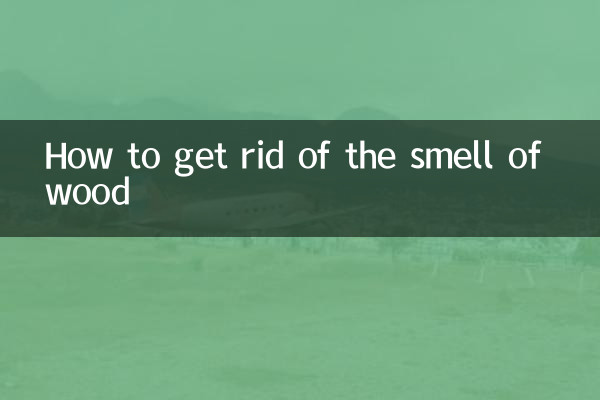How to get rid of the smell of wood
As a natural material, wood often has some special smell, especially newly purchased wooden furniture or decoration materials. These smells may come from the resin in the wood itself, chemicals in the processing, or the effects of the storage environment. How to effectively remove the odor of wood is a question that many people are concerned about. This article will provide you with detailed solutions based on the hot topics and hot content on the Internet in the past 10 days.
1. The origin of wood flavor

The flavor of wood mainly comes from the following aspects:
| Source | specific reasons |
|---|---|
| wood itself | Some woods (such as pine, camphor) contain natural resins or volatile substances that emit special odors. |
| Process | Chemical residues such as glue, paint, and preservatives cause odor. |
| Storage environment | Moisture, mildew, or long-term sealed storage may produce a musty or stuffy smell. |
2. How to remove the smell of wood
According to popular discussions and user sharing on the Internet in the past 10 days, here are several effective ways to remove odors:
| method | Specific operations | Applicable scenarios |
|---|---|---|
| Ventilate and dry | Place the wood in a well-ventilated area where sunlight can accelerate the evaporation of odors. | New furniture and decoration materials |
| Activated carbon adsorption | Place activated carbon packets around the wood to absorb odors using its porous structure. | Confined spaces or small pieces of wood |
| White vinegar wipe | Wipe wood surfaces with diluted white vinegar to neutralize alkaline odors. | Paint or glue residual smell |
| Baking soda deodorizes | Sprinkle baking soda on the surface of the wood or leave it nearby and let it sit for a few hours before cleaning. | Musty or damp smell |
| coffee grounds adsorption | Place dry coffee grounds in a gauze bag and place near wood to absorb odors. | Various wood odors |
| lemon juice cleanse | Wipe the wood surface with lemon juice to remove odors and leave a fresh fragrance. | Food grade wood products (such as cutting boards) |
3. Deodorizing techniques for different woods
For different types of wood, the deodorization methods are also different:
| wood type | Common odors | Recommended method |
|---|---|---|
| pine | Strong rosin smell | Ventilation and drying + activated carbon adsorption |
| oak | Paint or glue smell | White vinegar wipe + baking soda deodorizer |
| camphor wood | Natural camphor flavor | Just ventilate (no special treatment required) |
| Artificial board | Formaldehyde smell | Long time ventilation + air purifier |
4. Precautions
1.Avoid exposure to the sun: While sunlight helps remove odors, prolonged exposure may cause the wood to crack or fade.
2.Use chemical cleaners with caution: Strong acid and alkali cleaners may damage the wood surface. It is recommended to use natural methods first.
3.wait patiently: The smell of natural wood can take weeks or even months to completely dissipate.
4.Regular maintenance: For long-term use of wood products, regular care with wood maintenance oil can reduce the occurrence of odor.
5. Recommendations for popular deodorizing products on the Internet
According to recent popular discussions on e-commerce platforms and social media, the following deodorizing products have been widely praised:
| Product name | Main ingredients | Applicable scenarios |
|---|---|---|
| Bad Air Sponge | activated alumina | Formaldehyde and various odors |
| Bamboo Charcoal Bags | bamboo charcoal | Deodorize small spaces |
| Eco-Me Wood Cleaner | plant essential oils | Wood furniture surface cleaning |
Through the above methods, you can effectively remove various odors from wood. If the smell persists or is irritating, it is recommended to ask a professional agency to detect whether it contains harmful substances. The natural woody aroma is the charm of wood. Simply removing the bad odor will allow wood products to better integrate into your living space.

check the details

check the details